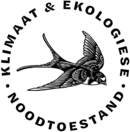Oor goema hare en Cape coloured culture

Traci Kwaai is 'n kunstenaar en illustreerder wat The Kwaai Gallery bestuur en bedryf. Klyntji het met haar gesels oor haar werk en inspirasie. Hier's haar storie.
I grew up spending a lot time with my late ma (maa - Ouma) who was the epitome of self expression and creativity. She had a zest for life and a love for all things wonderfully queer and beautiful. Always dressed to the nines with rooi lippies en hoë hakkies to go with her outfit. She came from a religious family and was often frowned upon for taking a “dop” or having “moffie” friends. I was in awe of her and her ability to create something out of nothing. We’d look for pictures in the clouds together and shared an “entjie” She’d say to me "hou 'n skyf" and I’d say "skyf jou hol tienie ceiling, dan kry jy oek die feeling" and she’d lag her in her chops.
Growing up with the challenges that comes with being from a poor community made me very aware of social injustices from a young age. As a society I feel that we need to start normalising Race, Culture, LGBTQ+, Disability, Menstruation and Body Positivity. Instead we shame each other for being too black, too fat or too sturvy or gham. Can we just talk without anyone getting 'n ajal. This why I am in awe of and inspired by the work and life of Frida Kahlo, a Mexican artist who I came to learn about 15 years ago. Her work is powerful and relevant and very relatable. She challenged the views of society through her art and her writing. Traveling to the Blue House in Coyoacán was one of the most amazing and inspiring things I’ve done. My best South African artist is Marlise Keith. Her work has been described as "sweetness with a sting" – for me deeply powerful and relatable too.
The people of Cape Town inspire me. I want people to look in the face at that which makes them uncomfortable. I want them to talk about it. I started illustrating my cards when I worked at Olympia Cafe, drawing people in the window having coffee. We had some delightful people coming in over the nine years that I worked there. The drawings are simple, naive, authentic and approachable. I have travelled to Europe and Central America somewhat and have always been interested in architecture and design. I always loved pins, the ones I had growing up were from thrift stores, and a few from my travels but then I came across Nicole Dalton from Ghost Goods and Tess Kleingeld from Frolik, both Cape Town graphic artists, who make various ranges of limited edition pins, cards and prints. I immediately contacted them to stock my store which I first opened at the Mojo Market a year ago and then moved to Kalk Bay, my home town from August 2017. The shop is a mengsel of original artworks, prints, jewellery, ceramics, baskets, figurines, socks and stationery. Artists/makers include Janine Binneman, Ghost Goods Studio, Frolik Studio, Lauren Fowler, Imile Wepener, L’Mri Erasmus, Nastasha Sale, Noush Kraal, Flick Inc, Stephanie Simpson, Andrew Hofmeyr, Patrick Latimer and many others.
I was inspired to do a collection pins of my own, pins that would evoke open dialogue around themes and issues of Cape coloured culture particularly, but not exclusively, and so the first two pins were designed.
Goema Hare (Candy Floss) in my taal started out as a derogatory word, used to described someones kinky hair as "kroeskop, pittekop, bossiekop." It was seen as ugly and everyone wanted "gladde hare". Coloured girls spent hours straightening their difficult unruly hair so they could be "steil" (straight) usually there was an Antie in road who had good upper body strength that could "tame the mane", soe om te sê. And then you’d have to go to bed with a "swirl kous" on to keep it that way, en moetie laat dit reëntie oooooh jitte dan mince jou hare lekker. Al jou harde werk vir niks. We launched the pin on the 10th of March at my little shop and we had Quanita Adams (kykNET actress) and Heloine Armstrong sharing their hair stories; they were so powerful and it was very inspiring and gave people who were not coloured an insight into the pain that previous regimes caused. Laws like the pencil test not only divided mense into in terms of race, but split families and I can only imagine how painful that must have been. Out of this pain... now comes the Goema Hare... "A fluffy, sticky sweet delight that clings to your pallet long after it has been eaten" says Quanita Adams.
The lyrics "meisie kyk hoe lyk jou hare" is still being used today by rap artist YoungstaCPT and in productions like Joe Barber. If we only had a deeper listening for each other we would understand and empathise more. And actually its got nothing to do with hair... it goes way deeper. The other pin I did was Masekind, a kinship which started amongst men but is now widely used by everyone. "Aweh masekind" can often be heard amongst South Africans no matter what social group you belong to. When you say Masekind you say child of my mother, my brother, my sister.
Cape coloured is not just Chung chakalang Chung Chung! May the conversations long continue!
- Meer inligting oor The Kwaai Gallery.
Eerste en oudste Afrikaanse tydskrif, sedert 1896
Ons bou aan ’n moderne beeld van hoe Afrikaanswees lyk, lees en klink. Het jy van Oor goema hare en Cape coloured culture gehou? Dan ondersteun ons. Vriende van Klyntji word op hierdie bladsy gelys.
















